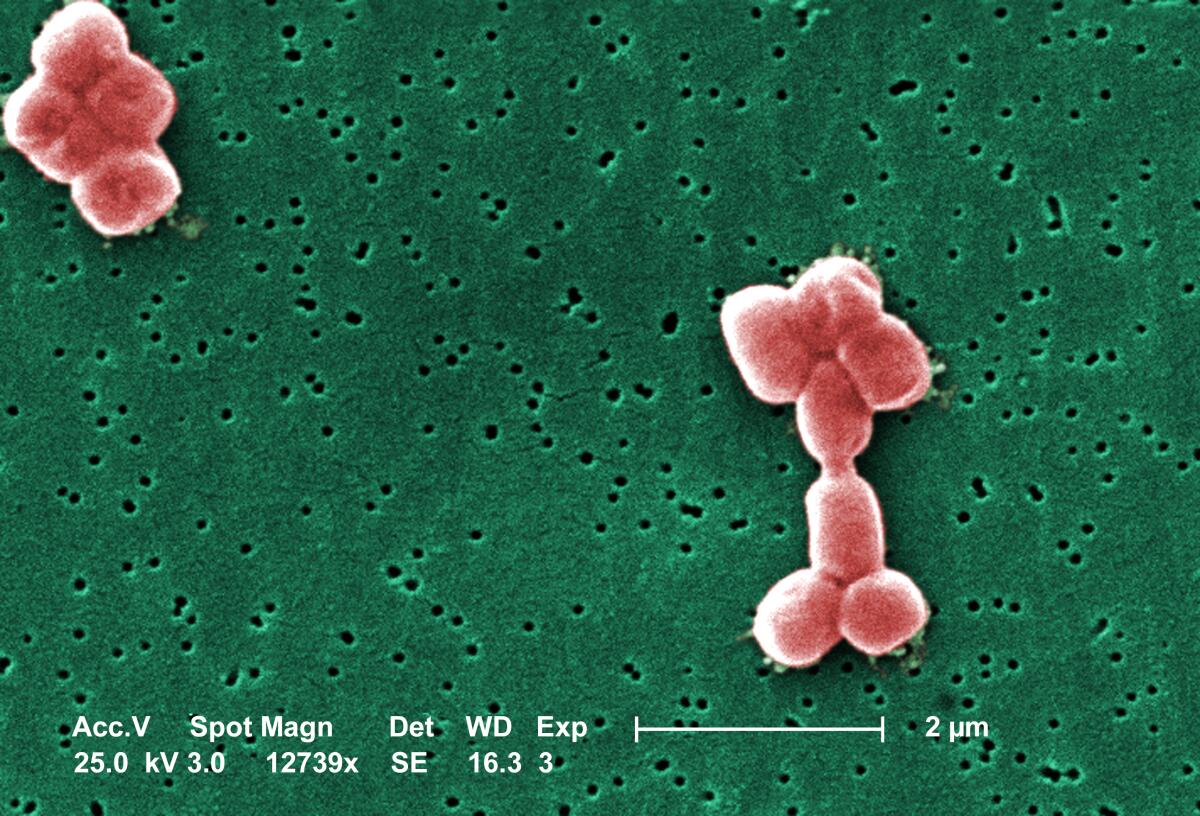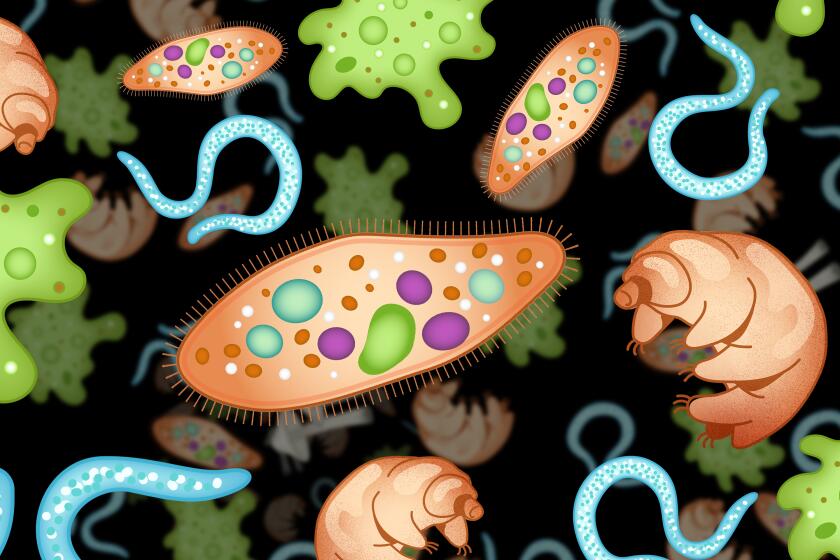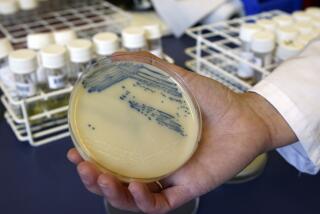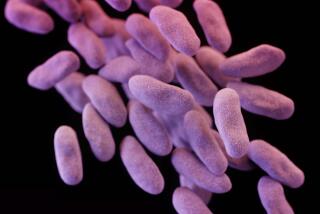A potent antibiotic has emerged in the battle against deadly, drug-resistant superbugs

Under a microscope, this drug-resistant superbug looks as benign as a handful of pebbles. Yet carbapenem-resistant Acinetobacter baumannii, or CRAB, is a nightmare for hospitals worldwide, as it kills roughly half of all patients who acquire it.
Identified as a top-priority pathogen by both the World Health Organization and the U.S. Centers for Disease Control and Prevention, CRAB is the most common form of a group of bacteria that are resistant to nearly all available antibiotics. Victims are typically hospitalized patients who are already sick with blood infections or pneumonia. In the U.S. alone, the bug sickens thousands and kills hundreds every year.
But 2024 is starting with some encouraging news on the global health front: For the first time in half a century, researchers have identified a new antibiotic that appears to effectively kill A. baumannii.
More emojis of plants, mollusks, flatworms, fungi and microorganisms could help spark new conversations about conservation and biodiversity, a new study argues.
The compound, zosurabalpin, attacks bacteria from a novel angle, disrupting the route that a key toxin takes on its journey from inside the bacterial cell to the outer membrane that shields the bug from the immune system’s defensive onslaughts.
No other antibiotic approved by the U.S. Food and Drug Administration takes this approach, and the element of surprise is an important advantage against even microscopic foes. A. baumannii has had no opportunity to develop resistance against the drug, which means that, for at least a little while, zosurabalpin could ward off severe illness and death.
“As far as I can tell, the scientific approach is brilliant,” said Dr. Oladele A. Ogunseitan, a professor of population health and disease prevention at UC Irvine who was not involved with the study.
The drug was developed jointly by scientists at the Swiss pharmaceutical company Roche and at Harvard University. Their findings were published Wednesday in the journal Nature.
Carbapenem-resistant A. baumannii is a type of gram-negative bacteria, a vexing category of superbugs. Encased in both an inner and outer membrane that antibiotics struggle to cross, gram-negative bacteria are resistant to most currently available therapies. They are also astonishingly canny for unicellular organisms, with the ability to rapidly develop new defenses against antibiotics and then pass them along to other bacteria through genetic material.
Antibiotic-resistant superbugs claim the lives of more than 1 million people globally each year. The rise of drug resistance is due in part to human folly — we have long over-prescribed and misused antibiotics — but it is also because bacteria are continually finding ways to evade threats. Over the last 50 years, these pathogens have evolved defenses faster than we can produce new drugs.
In their search for a new weapon, the Roche and Harvard scientists turned their attention to a group of compounds called tethered macrocyclic peptides. After testing a library of 45,000 MCPs, the researchers came across one that seemed especially lethal against A. baumannii. After some chemical tinkering, that compound became zosurabalpin.
“This is a very promising advance,” said Paul J. Hergenrother, a chemistry professor at the University of Illinois who was not involved in the research but wrote of the findings for Nature. “Zosurabalpin kills bacteria in a way that is different from all other approved antibiotics.”
The drug kicks into gear only in the presence of lipopolysaccharide, a bacterial toxin. LPS is made inside the bacterial cell and is carried by a dedicated transport system to the bug’s outer defenses.
“The bacterial outer membrane is important for bacteria because it helps them to live in harsh conditions and to survive attacks by our immune system,” said Kenneth Bradley, Roche’s global chief of discovery for infectious diseases.
Zosurabalpin essentially cuts off the LPS transport route. Without a way to get to the outer membrane of the cell, where it can get to work fighting off drugs and immune attacks, the toxin builds up inside the bacteria and eventually kills the cell.
Ghostwriter Kristin Loberg and many of her clients have apologized for misusing authors’ words without attribution. But publishing firms have been largely quiet.
In mice studies, the drug effectively killed off CRAB infections in the blood, lungs and thighs, a selection that mirrors the ways the bug infects humans.
It’s currently in Phase I trials in humans, where researchers are looking at the drug’s safety, tolerability and the amount of the chemical that remains in patients’ bodies over time, said Michael Lobritz, Roche’s infectious diseases chief.
“It has been more than 50 years since the last distinct class of antibiotic was launched that is capable of treating infections by Gram-negative bacteria,” Lobritz said in an email. “Any new antibiotic class that has the ability to treat infections caused by multidrug resistant (MDR) bacteria such as carbapenem-resistant Acinetobacter baumannii (CRAB) would be a significant breakthrough.”
Encouraging as the early results are, scientists stressed that it would be foolish to get cocky in the fight against a bug that, time and time again, has found ways to evade our most advanced pharmaceutical weaponry.
“Resistance has emerged to every antibiotic ever created, and it is likely that resistance will emerge to zosurabalpin in the future too, if it successfully becomes a clinical antibiotic,” Bradley said.
In their findings, the authors noted a few gene mutations in the lab that significantly decreased the drug’s success against A. baumannii. These were rare but worrying; one freak mutation reduced the drug’s effectiveness 256-fold.
“Although the rates of appearance of these resistant organisms is low, and comparable to standard-of-care antibiotics, the observation affirms the principle that we can never rest on our laurels with the chemical and biochemical warfare that we are waging on bacterial pathogens,” Ogunseitan said.
Zosurabalpin is essentially unknown to bacteria. If it proves safe and effective in humans, there’s probably a limited window in which it could effectively spare lives and suffering. But no matter how sophisticated our tools, scientists said, these potentially deadly cells will always have a major advantage against us.
“Bacteria have a big numbers advantage — billions can be in a flask,” said Hergenrother. “Bacteria will eventually evolve resistance to virtually every antibiotic, which is why we need a steady supply of new antibiotic candidates.”








